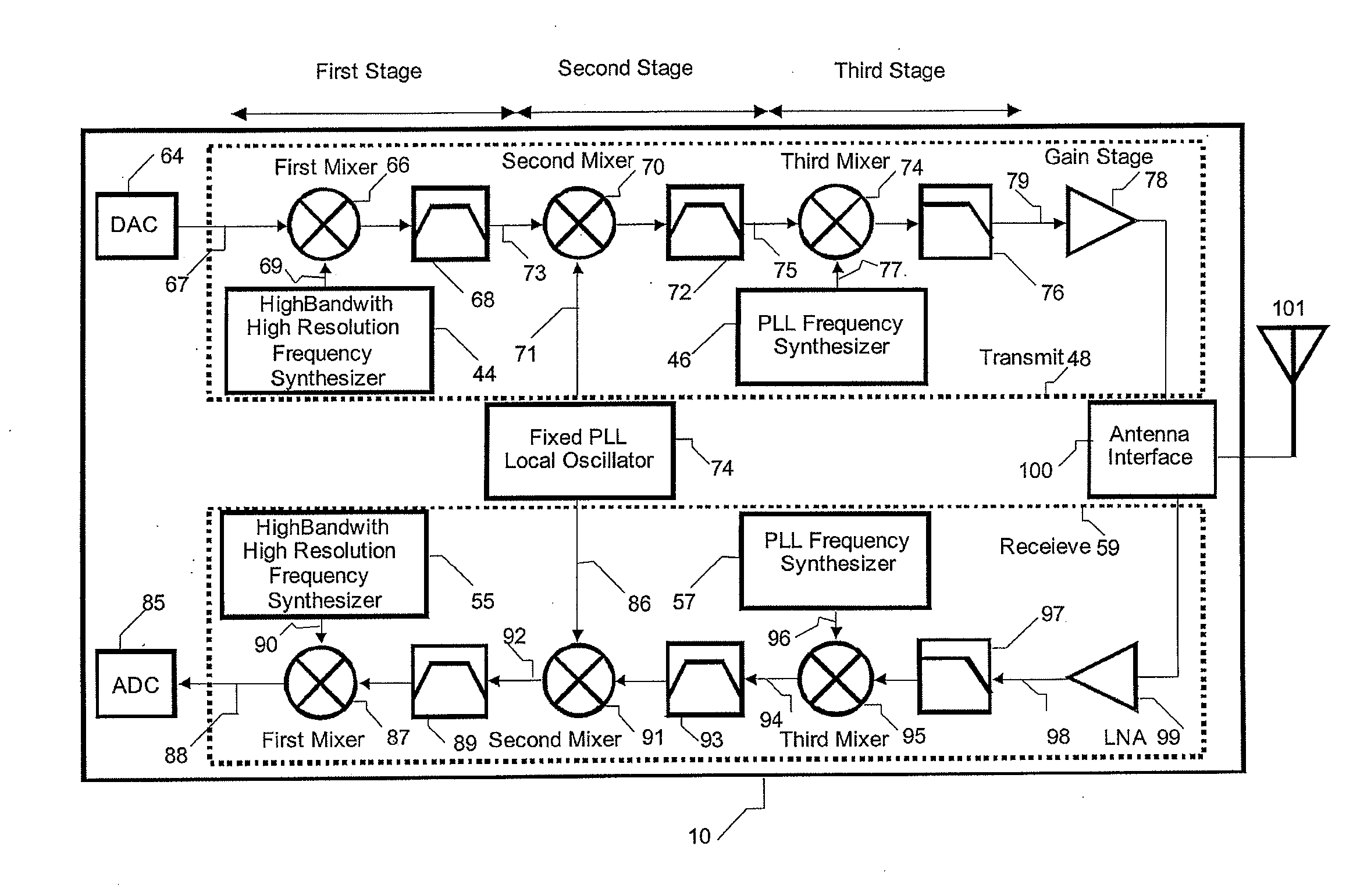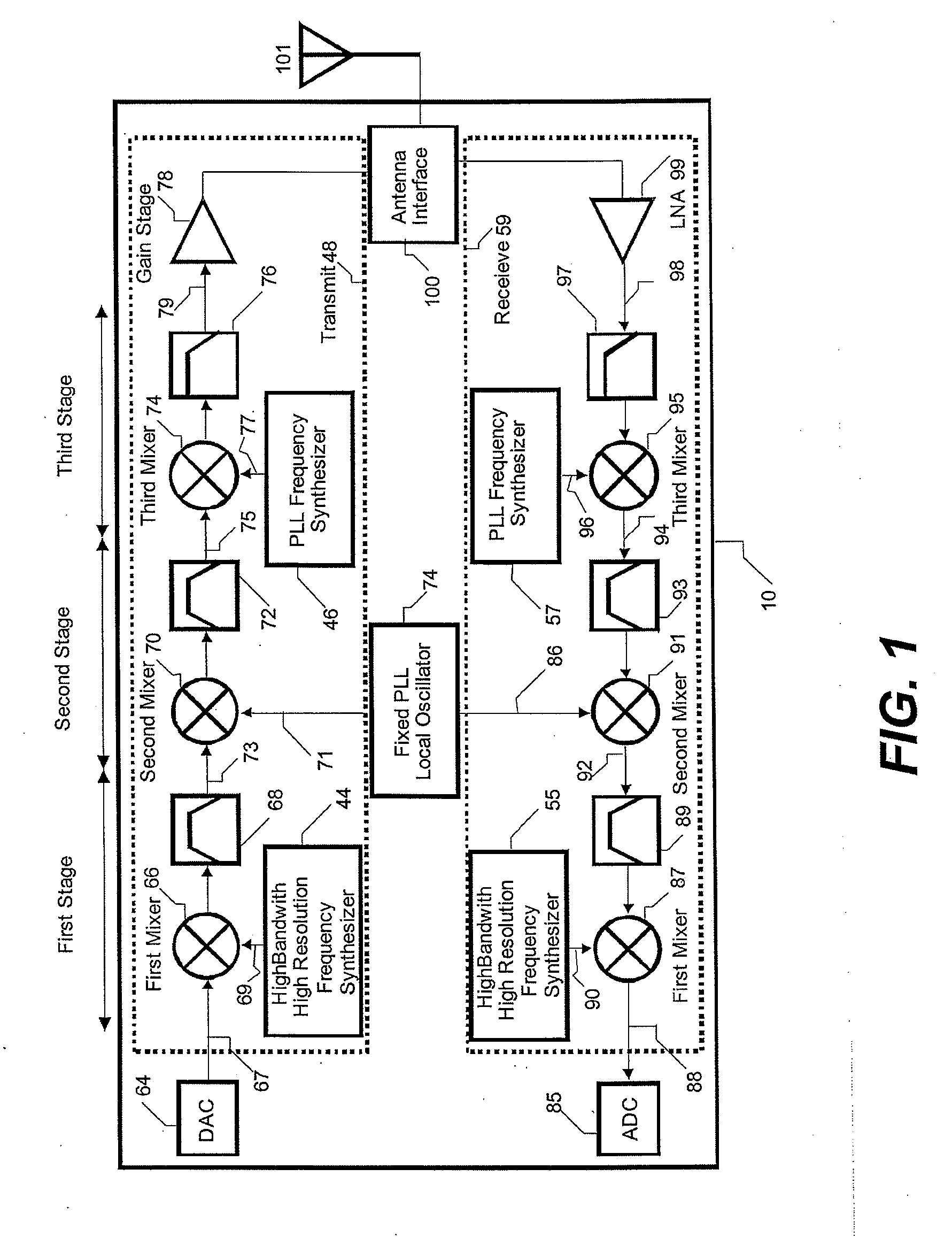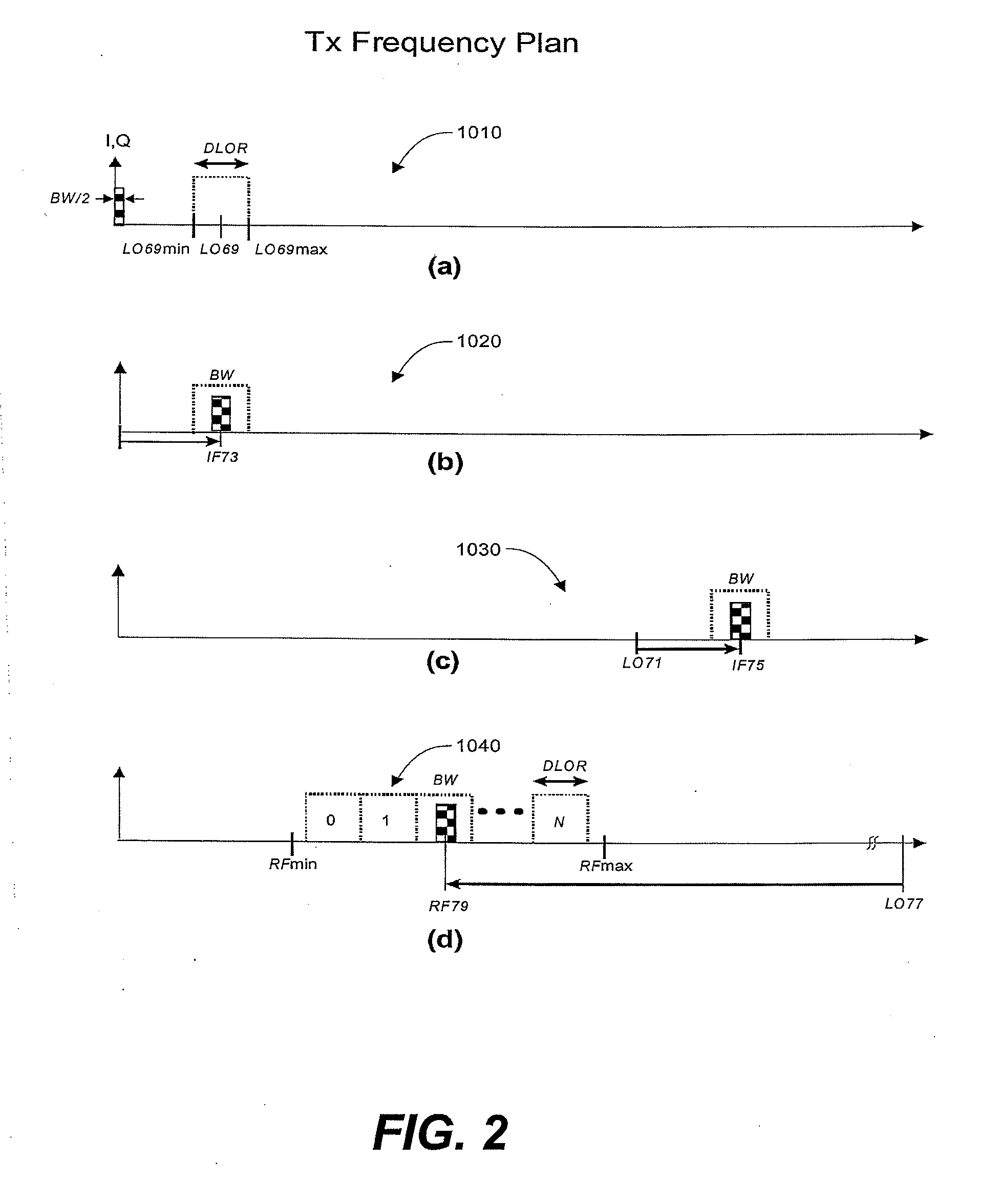Transceivers
a transceiver and receiver technology, applied in transmission systems, modulated carrier systems, transmission systems, etc., can solve the problems of reduced reliability, increased power dissipation, and significant redundancy, and achieve the effect of reducing the performance requirement of data converters and rf components, reducing power consumption, and small form factor
- Summary
- Abstract
- Description
- Claims
- Application Information
AI Technical Summary
Benefits of technology
Problems solved by technology
Method used
Image
Examples
Embodiment Construction
[0032]Embodiments of this invention in part include an architecture and frequency plan so as to achieve high level of integration for multi-band multi-standard transceivers. Additionally, embodiments of this invention in part relates to algorithms and circuit architectures so as to minimize hardware complexity in a preferred implementation. FIG. 1 illustrates a general block diagram of the transceiver circuitry 10 according to an embodiment of this invention. The transceiver consists of two separate paths: a Transmit path 48 that is responsible for frequency up conversion from DAC 64 output to an RF signal 79 driving a gain stage, and a Receive path 59 that is responsible for frequency down conversion from a pre-conditioned RF signal 98 at the output of LNA 99 to ADC 85 input. Each path consists of three stages namely first, second and third stages.
[0033]Considering the transmit circuitry 48, the first stage consists of the first mixer 66 coupled to a band pass filter 68 with the mi...
PUM
 Login to View More
Login to View More Abstract
Description
Claims
Application Information
 Login to View More
Login to View More - R&D
- Intellectual Property
- Life Sciences
- Materials
- Tech Scout
- Unparalleled Data Quality
- Higher Quality Content
- 60% Fewer Hallucinations
Browse by: Latest US Patents, China's latest patents, Technical Efficacy Thesaurus, Application Domain, Technology Topic, Popular Technical Reports.
© 2025 PatSnap. All rights reserved.Legal|Privacy policy|Modern Slavery Act Transparency Statement|Sitemap|About US| Contact US: help@patsnap.com



